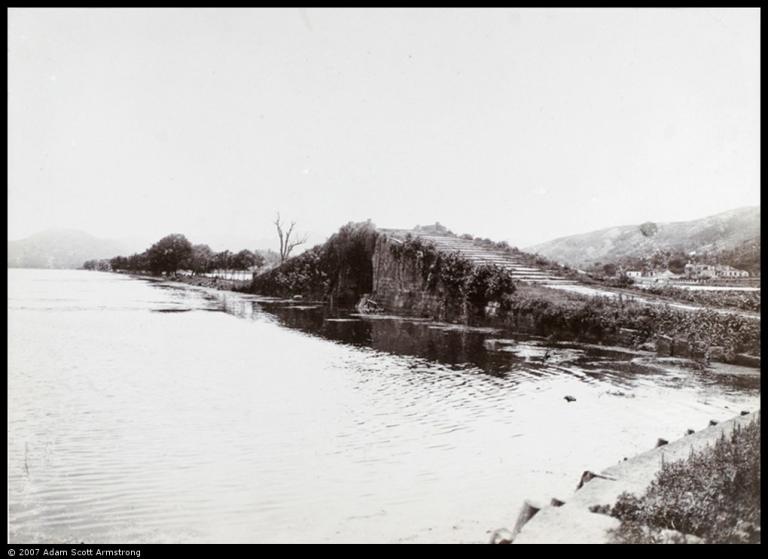Dark Night, Broken Bridge: What To Do When What's Worked Doesn't
The Broken Bridge, West Lake, Hangzhou, China
Many of us come to a place in our journey where what once worked is broken, where the path is dark, where we're at a loss - especially in these dark days of ongoing pandemic, climate crisis, social divisions, and political dis-ease.
The phrase "dark night of the soul," used variously in Christian mysticism, is often about the whole journey to union with God. In Western Zen, starting with Aitken Roshi, it is sometimes used for those very dry places on the Zen journey.
It was this that I was thinking about in Keep Me In Your Heart A While in "Cleaning Under the Hedge" (p. 53):
"Somehow I had survived the idealization, covert clinging to hopes for magical gain, and very crabby stages—this time around (but, the path being a spiral, I could have known this stage would come around again). Nonetheless, a level field was opening up. This was steadily walking without getting anywhere. More subtle work begins here. The practice at this stage is simply done for the sake of the practice itself. Searching for a motive at this stage is adding a head on top of a head. If we just stay with it, we might even start to get over our self a bit and direct our life to actualizing a purpose greater than our self."
During such times in the path of earnest dharma practice, turbulence, past trauma, or other psychological and/or physical issues emerge to seemingly block the Way. Sometimes a practitioner secretly believes that the arising of these issues is proof of their own lack of true practice or the dharma's lack of efficacy.
However, when worked through skillfully, these very times will later be seen as the fruit of the path. How? Subtle work is certainly called for. Some methods of engaging with whatever is arising may not work, are contraindicated, and so a freshness of view and careful attending to what is working and what is NOT is so important.
This requires a letting go of dogma, of what is "supposed" to work.

The Broken Bridge (long ago), West Lake, Hangzhou, China[/caption]
Proceeding tenderly and honestly is the Way. A teacher's guidance, of course, can be important. Going against one's proclivities to avoid interaction with others and being with dharma friends can also be a vital lifeline during these times. And it is at these times that we can seem so utterly alone even when we are with others.
I think here of No Gate Barrier, "Case 44: Bājiāo’s Walking Staff:"
The Venerable Bājiāo, presented to the assembly, saying, “If you have a walking staff, I will give you a walking staff. If you have no walking staff, I will seize your walking staff.”
Wúmén’s Comment
It supports you as you cross the water over the Broken Bridge. It is your companion, returning to the village, no moon. If you call it a walking staff, you enter hell straight as an arrow.
Verse
Everyplace - deep and shallow
Entirely in its grip
Supporting the sky and propping up the earth
Everywhere shaken by the school’s wind
The staff here might represent the practice-awakening that we've discovered through our sincere efforts on the Way and that we've settled into using to support us on our journey through the tough spots on the road. So we might think we have a staff, but it is at these times that the staff is taken and we find that we have no staff.
As Wúmén compassionately points out, clinging to our old staff sends us to hell.
On the other hand, we might think we have no staff, no support, no refuge. But it is at these times of difficulty that we really learn what no-staff truly is.
This no-staff staff supports us as we cross the bridge from this time to another phase of the journey, from isolation to community, or from community to a period of isolation - across the bridge that only seems to be broken, wholeness confirmed through continuing on the Way. The no-staff staff is our only friend as we walk through the village at midnight.
Wúmén's verse ends with "Everywhere shaken by the school’s wind." "School's wind" is the style, the customs, and the tradition of a lineage (宗風, Japanese, shūjo). Rather than these times of difficulty reflecting something wrong with us, this line radically affirms these periods - this too is the Way.
It is the wind of our Zen Way that shakes such things loose and exposes them. Our skillful practice is what makes possible our steady (and sometimes steady within the not-so-steady) walking with it all.
Additional recommended resource: Philip Taiho Martin, The Zen Path Through Depression.